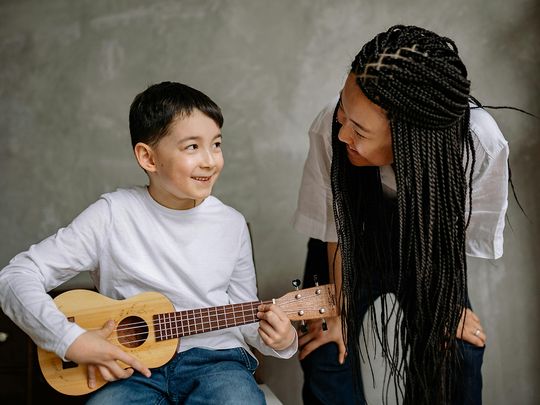
Picture this: You’re at a picnic in the park or a birthday party, and you come face to face with a friend or relative’s child. They might be looking up at you, waiting for some interaction. So, you open your mouth… and hear yourself asking the most boring question: “So, how’s school?” Ouch.
Click start to play today’s Spell It, where we figure out how to ‘intuit’ how to be a more natural conversationalist when children are involved.
Even the most confident adult can experience some awkwardness when faced with a little kid. Our own childhood feels like ages ago, and it becomes hard to relate to children because the rhythm of their days are so different from our own. But there are some strategies to become better at conversing with kids – the key is not to try to imagine what you were interested in at their age. Instead, consider them as individuals with their own interests and personalities, and speak to that little person.
According to an August 2023 report in the US multimedia website Vox, here are a few ways you can successfully talk to kids:
1. Find a point of connection
It may be difficult to find an icebreaker, but try looking for an open-ended topic, because kids will usually run with it. The icebreaker can be situational – for instance, if you’re at a birthday party you could ask them their opinion about the best (or worst) cake flavour. It’s easier if you start with a question about something you enjoy as well. For instance, you could ask a 10-year-old what video games they like to play, if you’re a gamer yourself. The more interesting the question, the better chance you have of getting an answer that’s more than one word.
2. Ask good follow-up questions
Once you’ve found a point of connection, it’s time to pay attention. Often, adults tend to slip up here because instead of actually listening to the child’s response, they jump in with a long story about themselves, and lose their audience. Active listening requires more than a little humility, along with a genuine interest in the child as a person whom you can listen to and learn from. So, if they’re interested in Pokemon cards, you might even ask them to tell you about it and teach you how to play.
3. Use good body language
A key aspect of active listening is body language and tone. With younger kids, it’s worth squatting down to their level so that you’re not looming over them. Make sure you put away your phone, make eye contact and smile. There’s no need to speak in a different voice though – it can actually lead to confusion and even more awkwardness. Overall, make the child feel safe, seen and secure, by holding a relaxed posture and sending signals of safety and connection.
4. Let them lead
Once the conversation is in full flow, you can take a step back and let their enthusiasm lead. Kids naturally steer the conversation towards their interests, so you can listen and ask more questions to keep it flowing. Often, this can mean being speculative or even silly, and will give you a chance to have fun as you come up with more interesting points of inquiry.
5. Be yourself
Just like adults, kids have different temperaments and personalities. If you’re shy and you’re unsure about what to talk about, ask a question – it’ll direct attention away from you and get kids talking so you don’t have to talk as much. Similarly, if you notice a child seeming anxious, you can make sure you’re projecting a warm, safe environment for them. The key is to be your authentic self, just as children usually are.
Do you find it easy or difficult to converse with kids? Play today’s Spell It and tell us at games@gulfnews.com.







